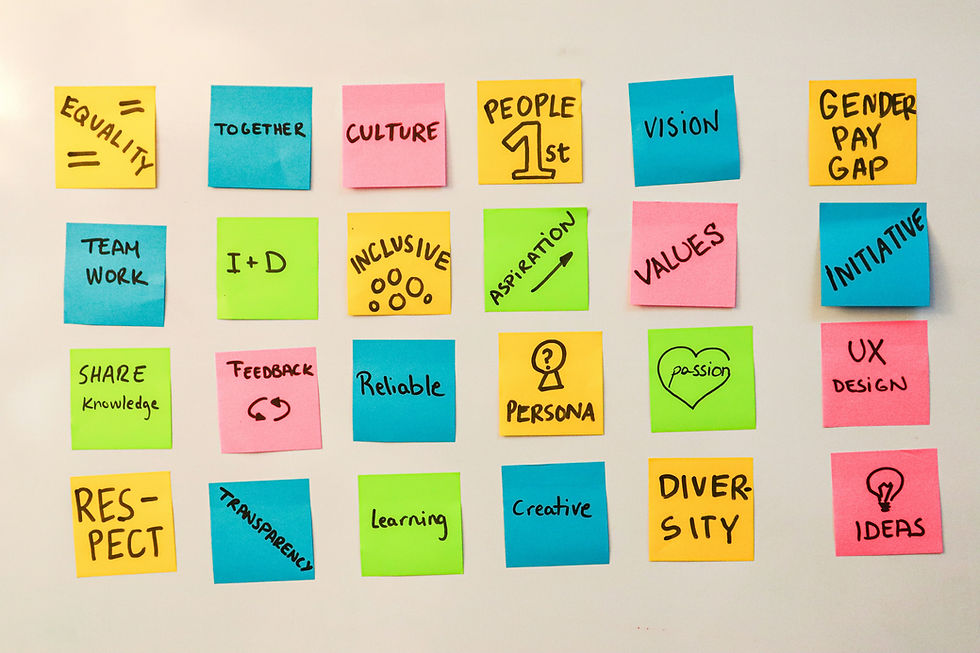How to find your 'Why?'
- helenjbutler
- Sep 30, 2020
- 3 min read

Eleventy billion people have now watched Simon Sinek’s TED talk ‘Start with why – how great leaders inspire action.’ And many will have been inspired and motivated to do just that (were you one of them?). But unfortunately very few will have got any further, as in actual fact, in that talk (and in the book that inevitably followed it; Start with Why ), there is no simple system for finding that elusive Why.
Of course, the next book ‘Find Your Why’ did follow eventually (6 years later!), but by that point it was only the real enthusiasts (and more recent discoverers of the TED talk and first book) who were primed to read it.
A recap:
‘People don’t buy what you do, they buy why you do it’
‘The goal is not to do business with everybody who needs what you have to offer, the goal is to do business with people who believe what you believe.’
These are as relevant to a multinational company like Apple as to an individual who wants to change their career. And of course, every business and team in between (apparently Tesla show the TED talk to their new recruits as part of their induction processes). And of course it’s all about purpose, although it’s not really fashionable to talk about that any more.
So how do you find your Why?
Firstly, the ground work – the difference between happiness and fulfilment is that happiness comes from what we do, and fulfilment comes from why we do it.
Once you know your Why, you have a choice to live it every day. And that means consistently taking actions that are in alignment with the things you say, and the things you believe. It’s as simple as that. And what follows is that you attract the people - and their business – who believe the same thing.
The Why discovery process that Sinek and his co-authors plot out in ‘Find your Why’ is in three core steps:
1. Gather stories and share them – ‘at it’s core, the Why is an origin story. By looking to our past and teasing out the most significant threads – the experiences we’ve had, the people we’ve been influenced by, the lives we’ve touched and the highs and lows we’ve faced – we can identify patterns’
2. Identify themes. As the process unfolds, one or two of those nuggets will seem to shine brighter than all the others. They will feel bigger, more important. They will shine so brightly that you’ll point to them and say, ‘That’s me—that’s who I am,’ or ‘That’s us—that’s our team.’ These themes become the foundation of your WHY Statement.”
3. Draft and refine a WHY statement – make it clear, actionable, focused on the effect it will have on others, and expressed in affirmative language that means something to you. Eventually you’ll have one sentence in this format:
To______(your contribution) so that _______(your impact)
i.e. To enable people to be extraordinary, so that they can do extraordinary things.
And then it’s on to identifying the Hows - which are the actions that bring your Why to life. They’re your strengths.
That was of course just a whistle stop tour of the basic principles. If you’re serious about finding your Why and transforming your business or career with the result, then please do buy the books, or indeed get in touch with me for a few sessions where we can have some fun getting to the bottom of your Why and translating it into something game changing for you or your business.
I started drawing from this a few years ago for businesses – initially from defining their Vision, Mission, Values. I used some of Sinek’s and others techniques to ensure that what I came up with was simple to communicate and understand, and of course immediately actionable. Over lockdown I’ve also started using the same principles to help people discover their personal brand to enhance and change their careers. The beauty of it is it's universality.
Photo by Becca Tapert on Unsplash







Comments